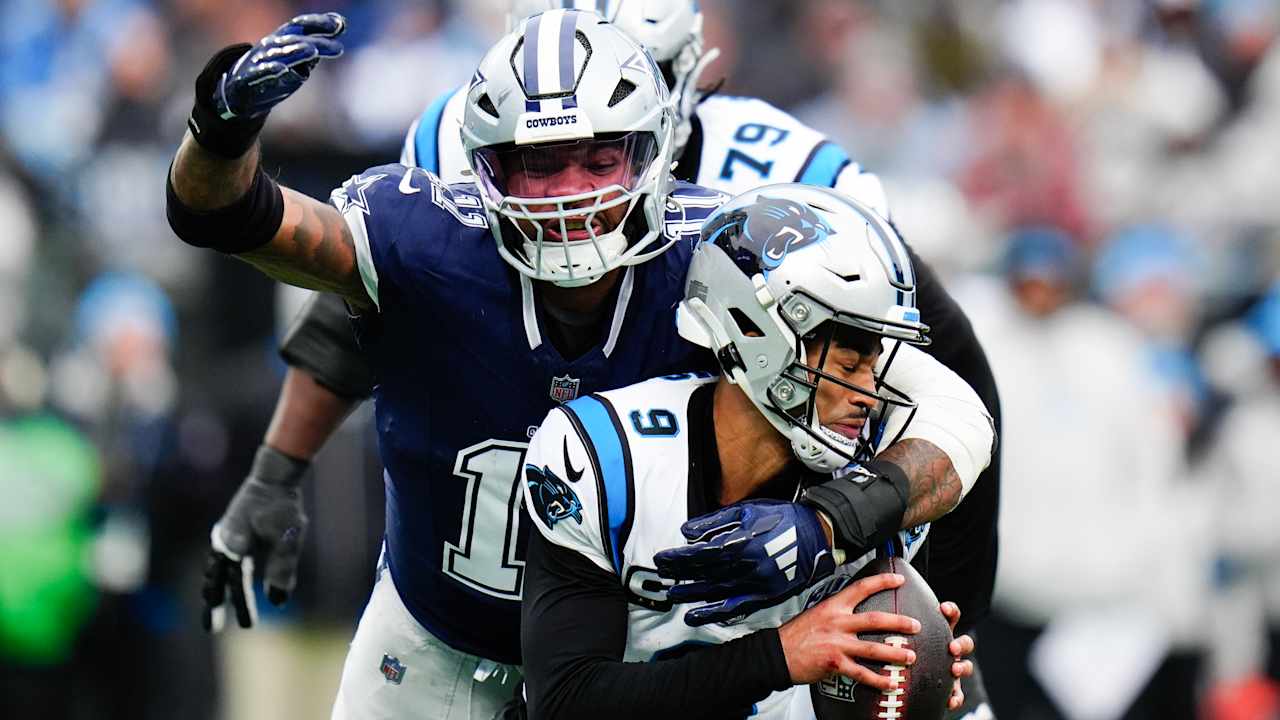NBA
The NBA’s latest arms race? Building wildly expensive practice facilities

The Cleveland Cavaliers launched the newest salvo. On a chilly, drizzly mid-October morning, several hundred people gathered along the Cuyahoga River to celebrate the groundbreaking for a gargantuan new practice facility that could outclass any training center in pro basketball.
“It’s a tremendous day in Cleveland,” Cavaliers president of basketball operations Koby Altman told the crowd, “and we can’t let the weather dampen our mood because we are standing on what’s going to be, this exact location, the most spectacular sports training facility in the world.”
A few minutes later, 17 dignitaries — including Altman, Cleveland Mayor Justin M. Bibb, Cleveland Clinic CEO Tom Mihaljevic and Cavaliers stars Donovan Mitchell and Evan Mobley — plunged gold-plated shovels into the dirt. Fireworks launched toward the river. Recorded music blared over loudspeakers. Pyrotechnics exploded overhead.
The Cleveland Clinic Global Peak Performance Center, designed by the architecture firm Populous and expected to open in 2027, will escalate the most visible NBA off-court competition of the last decade to more garish and more player-friendly heights.
Since 2014, with basketball operations departments and team payrolls expanding, 20 of the league’s 30 franchises have opened new practice facilities. It has been an unrelenting contest of innovation and one-upmanship, with most of the participating clubs claiming new advantages in athlete care, roster retention and free-agency recruitment. In recent years, the price tag to build a standalone training center has typically ranged from $70 million to $90 million, according to figures cited by the teams, usually paid for by the franchises themselves.
“This is an arms race of sorts,” said Nic Barlage, the CEO of Rock Entertainment Group, an umbrella company for Cavs owner Dan Gilbert. “The NBA … is built off of innovation and evolution and leveraging all the amazing resources that we all have across the league.”
The new facilities share similar hallmarks. All of them feature two full-size basketball courts, allowing each team to operate more efficiently. Most of them, in conjunction with partner health care systems, boast state-of-the-art imaging equipment; in some cases, if a player suffers an injury during practice, he doesn’t need to leave the building to receive an MRI or X-rays. Training and recovery amenities include cutting-edge weight rooms, cold-plunge tubs and high-altitude simulation chambers. Chef-staffed kitchens offer fresh, healthy food.
“You want to create an environment where the athlete can be elevated,” said Populous’ Jonathan Mallie, the lead architect on the Cavaliers’ project.
In September, the Houston Rockets, who used to train in a facility within their game-night arena, opened the Memorial Hermann | Houston Rockets Training Center, a 75,000-square-foot building. The LA Clippers, who previously trained in a standalone building in Playa Vista, Calif., recently opened a new 86,000-square-foot facility within their new arena, the Intuit Dome.
The Rockets opened a new 75,000-square-foot training center shortly before this season began. (Courtesy of the Houston Rockets)
The NBA’s building boom shows few signs of slowing. The Charlotte Hornets intend to break ground in early 2025 on a 160,000-square-foot facility adjacent to their area, with the expectation it will open before the 2026-27 season. The city of Charlotte will pay $30 million toward construction, and Hornets officials have said they will pay for all costs above that $30 million.
Josh Kroenke, the vice president of Kroenke Sports & Entertainment, has said a practice facility for the Denver Nuggets and NHL’s Colorado Avalanche is in “the design phase.” Monumental Sports & Entertainment officials are searching for a site within the District of Columbia to build a new practice facility for the Washington Wizards.
In 2007, the Cavaliers opened a standalone training facility in Independence, Ohio, that is still considered one of the league’s better training centers. But since 2014, the other four members of the Central Division — the Chicago Bulls, Indiana Pacers, Milwaukee Bucks and the Detroit Pistons — have opened new facilities. Cavaliers officials said that their rationale for a new building has little to do with the competition; instead, they note that, because of the expansion of their team’s basketball operations department, they’ve run out of room in Independence to expand.
But the Cavaliers clearly intend to outdo everyone. Their new training center will boast a league-high 210,000 square feet of space. Approximately 150,000 square feet will be dedicated to the Cavaliers’ basketball operations. The building also will include 60,000 square feet for the Cleveland Clinic, which will provide care for the general public and gather sports health data intended to help weekend warriors and help Cavs players withstand the rigors of an NBA season.
It also will include what team officials are calling “The Shot Lab,” a half court that will be surrounded by a direct-view LED screen, feature a glass floor and a state-of-the-art sound system. It will mimic the sights, sounds and depth perception within any NBA arena, Barlage said. So if the Cavs are about to play a road game against the New York Knicks, for example, Cavs players can immerse themselves in a setting that approximates Madison Square Garden.
The new building will be a big deal for additional reasons, team and government officials said. Almost half a century ago, in an incident that embarrassed northeast Ohio residents, an oil slick on the Cuyahoga caught fire. But now, the river is healthier, and the new building will anchor a $3.5 billion riverfront development project by Bedrock Real Estate, which Gilbert owns.
“It’s going to be a spectacular place for guys to go to work, to live, work and play downtown,” Altman told The Athletic.
Most of the newer practice facilities feature multiple distinctive touches.
The Pacers use an underground tunnel beneath Indianapolis’ Delaware Street that connects their facility, the Ascension St. Vincent Center, to their arena, Gainbridge Fieldhouse. Inside the Atlanta Hawks’ Emory Healthcare Courts, injured players can receive treatment on athletic-training tables while they watch, with a clear line of sight, teammates practice. The Pistons’ five-year-old building houses the team’s business operations staff, in addition to the franchise’s basketball operations department, also houses the team’s business operations staff.
The Orlando Magic’s 2-year-old building, the AdventHealth Training Center, features a 6,000-square-foot atrium. Flooded with natural light decorated by live plants and wood paneling, it serves as a dining area and a gathering place for players, coaches, and team staff. A restaurant-grade kitchen serves fresh meals and concocts post-workout smoothies.
On a morning before practice last February, with the sound of a chef’s spatula slapping against an omelet grill echoing throughout the space, brothers Franz and Moe Wagner sat with staffers as they ate a breakfast that included egg frittatas, oatmeal and potatoes. One by one, players such as Goga Bitadze, Gary Harris and Jonathan Isaac walked through, with Isaac eating outdoors on a sun-splashed 75-degree day, enjoying a view of downtown Orlando’s skyline.
The atrium is one of the spaces that Jeff Weltman, the Magic’s president of basketball operations, loves the most. One of the values that the Magic and other teams espouse is collaboration, where employees from different sub-departments can work together on projects or have chance encounters. It’s no wonder, then, that Orlando’s facility has an open-concept floor plan and meeting areas.
“When we set out to build it, I think that we wanted to create a unique practice facility that no one had done,” Weltman said. “But more than that, we wanted to really represent our values and be what we’re about. And so when I think about what we’re trying to do, I think that the atrium is the place that brings our team together.”
In 2010, the team moved its practice facility into a brand-new downtown arena. For a short time, the space was considered one of the best in-arena practice facilities in the league.
But within nine years, the team’s in-arena facility had been rendered out of date. Weltman informed team CEO Alex Martins that the franchise needed a standalone facility with two courts. Weltman is grateful that Martins and the franchise’s owners, the DeVos family, purchased land near the arena for $5.1 million and constructed the AdventHealth Training Center for $70 million.

The locker room at AdventHealth Training Center. (Courtesy of the Orlando Magic)
Moe Wagner played for the Los Angeles Lakers, Wizards and Boston Celtics — all teams with new facilities — before he joined the Magic, and he said none of those spaces compare to the Magic’s. Natural light streams into every space, even onto the two-and-a-half practice courts, the weight room and the team’s locker room.
“It’s one thing that everything is nice, but first of all, the luxury of Orlando is you have outside space, you have natural light,” Wagner said. “Then there’s a great flow to it.”
But how much does a state-of-the-art, beautiful practice facility really matter in terms of how well a team plays? How much does it help a team retain its own players and attract free agents?
Those questions are difficult to answer precisely.
The practice facilities for the Miami Heat and Denver Nuggets are housed within the teams’ arenas, and, if there were an objective leaguewide ranking, those facilities almost certainly would rank at or near the bottom.
And yet, the Heat and Nuggets don’t seem hampered by their situations. When Damian Lillard sought a trade from Portland in 2023, he initially preferred to go to Miami, which has posted winning records in 13 of the last 16 full seasons. The Nuggets, meanwhile, have had seven consecutive winning seasons and captured their first NBA title in 2023.
When Wagner was asked whether a new facility helps a team win, he paused. “It’s a good question,” he said. “Probably, yeah. I would say if the standard of the facility is high-end, the players better be, too. I do think that the players feel that. I mean, there’s no excuse, right? There’s no excuse not to work every day when you have a place like that.”
Wizards guard Malcolm Brogdon, a vice president of the National Basketball Players Association, has seen both sides. When the Bucks drafted him in 2016, the team was based in a standalone facility in St. Francis, Wis. In St. Francis, Brogdon said, the ceiling would leak sometimes, creating slippery conditions on its lone court. In 2017, the team moved into the gleaming Froedtert & the Medical College of Wisconsin Sports Science Center, a 77,500-square-foot facility in downtown Milwaukee.
“If you want to win, you’ve got to pay to play,” Brogdon said. “That’s what I always say. So you’ve got to spend money if you want your team to win … I mean, everybody’s building them. It’s part of the game. It’s part of how you stay in the competitive run for winning a championship.”
These days, a new, well-thought-out practice facility is a statement of intent: a statement by a franchise that it is serious about challenging for a title.
In October 2023, the San Antonio Spurs opened the Victory Capital Performance Center, a 138,900-square-foot facility. It has made a big difference in bringing all the team’s basketball operations employees together, Spurs coach and executive Gregg Popovich said, adding it “makes a camaraderie or kind of a no-blame environment.” The players also have everything they need.
But Popovich won’t go as far as saying that a new practice facility, even one as beautiful as the Spurs’ new home, helps in free agency. More important from players’ perspectives, he said, is the quality of the roster and whether team officials can deliver on promises to win. Popovich cited Tim Duncan’s decision in 2000 to re-sign with the Spurs.
“I remember being up at night with him, his wife and my wife and I, till 2 or 3 in the morning during that process, talking about what the plans were for the future and what we thought we were going to do,” Popovich said. “And then that player makes a decision, like, ‘I believe you’ or ‘You’re full of crap, and this is better for me and my family and I’m going to go here.’ So I don’t put any stock in (a new facility making a difference in free agency). In our new practice facility, are they going to come because they like what we serve at lunch better than some other place? I think that’s silly.”
In July, Kentavious Caldwell-Pope signed a three-year, $66 million contract to join the Magic. But he said Orlando’s new facility did not factor into his decision.
His family’s happiness, his salary, the years on the contract, his role, new coaches and new teammates all took precedence. “I thought (the Magic) were still in the old practice facility,” Caldwell-Pope said. “But when I got here, before I signed, they took me right to the new practice facility, and I was so amazed.”
Dominique Wilkins and Joe Dumars can hardly believe how much facilities have changed for players since they entered the league in the 1980s.
Wilkins recalled that the Hawks practiced early in his career either at a local health club or at Morehouse College or at Morris Brown College.
“Those were different times,” said Wilkins, now a Hawks vice president of basketball, special advisor to the CEO and TV analyst. “We were great, but we would’ve been even greater if we had these practice facilities.”
A turning point occurred in the early 1990s. In 1992, the Bulls opened what was the NBA’s first standalone practice facility, the Sheri L. Berto Center.
At that time, Pistons executive Billy McKinney was speaking with the Pistons’ then-owner, William Davidson, when Davidson asked what his team needed to do to keep pace with Michael Jordan’s Bulls. McKinney told Davidson about the Berto Center, and Davidson decided to build a standalone facility for the Pistons: a training center across a parking lot from The Palace of Auburn Hills. The arms race had started.
That place was considered “amazing” at the time but “would be the most basic one in the league right now,” said Dumars, an NBA executive vice president and the league’s head of basketball operations. “The facilities that the guys have now as opposed to when I was playing are just spectacular. It’s just unbelievable how plush and nice they are.”
Dumars envisions facilities becoming incrementally better and better in the years ahead.
Talk to officials from many rival teams, and they expect the Cavaliers’ new home to set a new standard.
Until another team attempts to top it, that is.
“There’s never going to be an end to the arms race of practice facilities,” Weltman said, “and there’s never going to be an end to the arms race of anything that we do for our players in this league, because there are 30 of us and we’re all highly competitive and we all want to put our players in the best position to succeed.”
Sign up to get The Bounce, the essential NBA newsletter from Zach Harper and The Athletic staff, delivered free to your inbox.
(Illustration: Sean Reilly / The Athletic; Photos courtesy of Cleveland Cavaliers and Orlando Magic)









